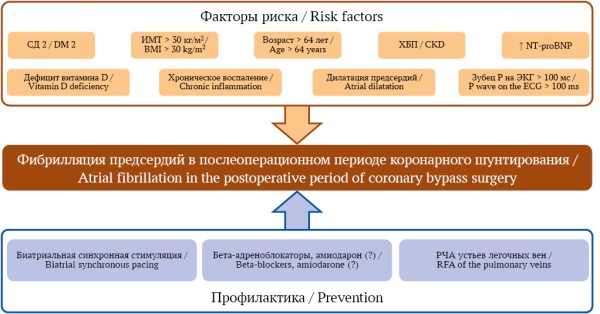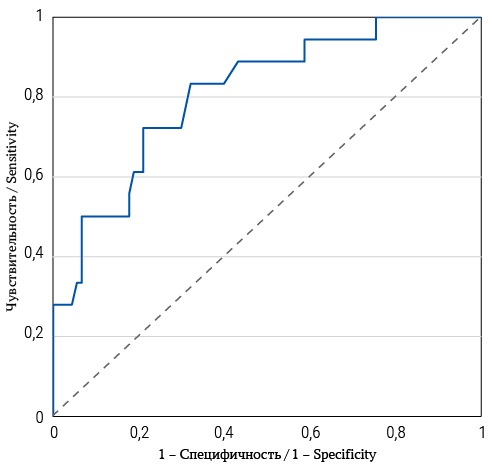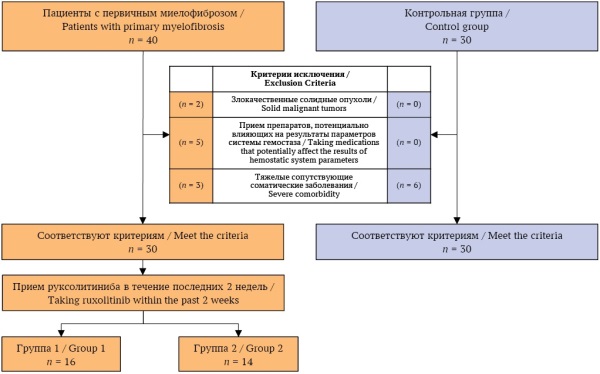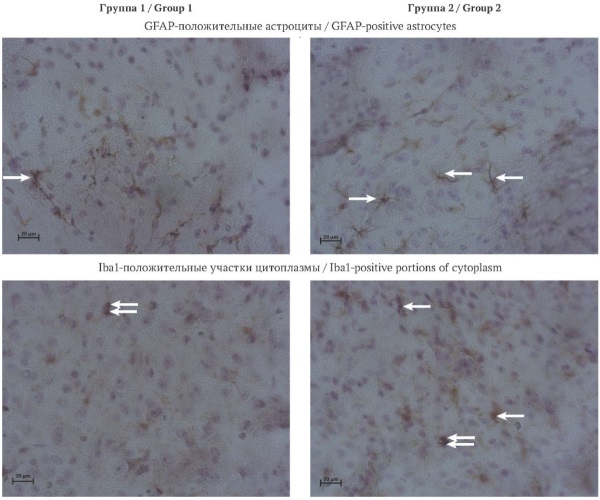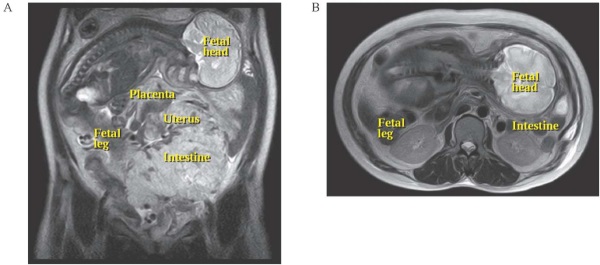INTERNAL MEDICINE
The increasing volume of coronary artery bypass grafting inevitably contributes to a growing number of postoperative complications. Atrial fibrillation (AF) develops in every second or third patient. This complication prolongs inpatient stays and increases costs of the healthcare system. The review presents data on the risk factors for postoperative AF, as well as the proposed methods of prevention and treatment. The research results indicate the role of type 2 diabetes mellitus, obesity, arterial hypertension; among laboratory parameters, mean platelet volume, red blood cell distribution width, C-reactive protein, erythrocyte sedimentation rate, monocyte/high-density lipoprotein cholesterol ratio are of prognostic value. Drug and non-drug methods of prevention and treatment of postoperative AF are discussed. The methods indicated in the presented works showed effectiveness, but had a number of limitations.
Aim. Тo study cardiometabolic factors and the PNPLA3 I148M (rs738409 C>G) gene polymorphism in association with the compensated advanced chronic liver disease (cACLD) in patients with metabolic dysfunction-associated steatotic liver disease (MASLD).
Materials and methods. А retrospective cross-sectional study was conducted. The total of 108 patients with MASLD (33 men and 75 women aged 28 to 89 years) involved were divided into two groups based on results of transient elastography: group 1 – with the presence of cACLD (liver stiffness ≥ 8.0 kPa) – 18 patients and group 2 – without cACLD (<8.0 kPa) – 90 patients. Cardiometabolic risk factors and the PNPLA3 I148M (rs738409 C>G) gene polymorphism were studied in both groups. Odds ratios (OR) and 95% confidence intervals (CI) were calculated, and a logistic regression model was constructed for the detection of cACLD.
Results. Compared to group 2, patients with cACLD had statistically significant higher prevalence of: arterial hypertension (p < 0.05), type 2 diabetes mellitus (p < 0.01), obesity (p < 0.05), dyslipidemia (p < 0.05), and PNPLA3 gene polymorphism (p < 0.05). The OR for cACLD in individuals with arterial hypertension was 5.58 (95% CI: 1.21–25.71; p < 0.05), with type 2 diabetes mellitus – 4.58 (95% CI: 1.59–13.21; p < 0.01), with obesity – 3.83 (95% CI: 1.17–12.52; p < 0.05), with dyslipidemia – 6.12 (95% CI: 1.33–28.20; p < 0.05), in the presence of a polymorphic variant of the PNPLA3 gene in a hetero or homozygous state – 3.9 (95% CI: 1.28–11.89; p < 0.05). The binary logistic regression model for detecting cACLD included type 2 diabetes mellitus, dyslipidemia, and waist circumference. The area under the ROC curve was 0.81 (95% CI: 0.70–0.92), sensitivity was 72.2%, specificity was 74.4%, and accuracy was 84.3%.
Conclusion. Type 2 diabetes mellitus, dyslipidemia, and waist circumference are the determining factors for the development of cACLD in patients with MASLD. The PNPLA3 I148M gene polymorphism does not play a leading role in the development of progressive MASLD in the study cohort.
ONCOLOGY
Aim. To evaluate the effect of ruxolitinib therapy on hemostasis in patients with primary myelofibrosis (PMF).
Materials and methods. 30 patients with PMF were examined, 16 of them received ruxolitinib (group 1) at the time of examination and 14 were untreated (group 2). The control group consisted of 30 healthy individuals. A complete blood count was performed, the platelets aggregation, the activity of Willebrand factor, factor VIII and natural anticoagulants were evaluated. In the thrombin generation test, the endogenous thrombin potential (ETP, nM×min) was determined; sensitivity to thrombomodulin and coagulation index were calculated. Kruskal-Wallis test with post hoc Dunn test was used to compare groups.
Results. Hemoglobin and platelet count were lower in group 1 compared to group 2 and control. Platelet aggregation with collagen was lower in patients with PMF than in the control group, and lower in group 1 than in group 2: 2.2 (1.6; 5.7) % vs 41.6 (3.4; 64.8) %, p < 0.05. In patients in group 1, the activity of Willebrand factor – 150.0 (122.5; 195) % and factor VIII – 173 (148.5; 200) % was higher (p < 0.05) than in the control: 97 (84.8; 110) % and 104 (85; 130) % respectively. Antithrombin did not differ in the PMF and control group. Protein S was reduced in both groups with PMF: group 1 – 70 (58; 86,6) %, group 2 – 65 (43,6; 107,5) %, control – 102 (86; 109,0) %, p < 0.001. ETP and sensitivity to thrombomodulin in groups 1 and 2 were low, p < 0.001. The coagulation index tended to higher values than in the control: 5.3 (3.0; 11.4) – group 1; 3.2 (2.4; 7.3) – group 2; control – 1.9 (1.6; 2.2), p = 0.073.
Conclusion. Ruxolitinib therapy leads to the failure of the platelet hemostasis, the procoagulant activity of plasma with an increase in the activity of Willebrand factor and factor VIII and a decrease in the activity of protein S.
CELL BIOLOGY, CYTOLOGY, HISTOLOGY
Aim. To assess the effect of 30-day dark deprivation on functional and histomorphometric changes in adenohypophysis gonadotropic endocrinocytes and their reversibility in mature male rats.
Materials and methods. Mongrel white male rats (n = 36) weighing 365–375 g at 4 months of age were randomly divided into three groups (each n = 12). For 30 days the control group was in automatic light-dark mode 12/12, and the rats of experimental groups 1 and 2 were in round-the-clock artificial lighting (24/0, 300 Lux), then the rats of group 2 were returned to 12/12 mode for the next 14 days. In the animals of the control and group 1 during their lifetime on the 31st day, and in group 2 on the 45th day, blood was taken from the abdominal aorta and levels of follicle-stimulating (FSH) and luteinizing (LH) hormones, melatonin, and Klotho protein were determined an enzyme-linked immunosorbent assay and immunoassay and after which they were removed from the experiment by decapitation. Postmortem histological and immunohistochemical examination of the pituitary gland was done using rabbit polyclonal antibodies targeting caspase-3 and Klotho protein, as well as morphometry. Statistical data processing was performed using the Kruskal-Wallis test with post-hoc Dunn’s test.
Results. Light desynchronization in the form of 30 days of dark deprivation increased FSH and LH levels and decreased melatonin and Klotho protein levels in the blood of male rats; increased gonadotropic endocrine cell area, volume, and perimeter by 23.1% (p < 0.001), 48.7% (p < 0.001), and 10.9% (p < 0.001), respectively; and increased nucleus area, volume, and perimeter by 16%, 11.7%, and 2.5%, respectively. An immunohistochemical study showed an increase in the specific area of caspase-3-immunoreactive gonadotropic endocrinocytes by 25.2% without obvious morphological signs of apoptosis, and a decrease in the expression of Klotho protein by 25.7%. All indicators were reversible, the levels of FSH and Klotho protein in the blood of animals almost reached their initial values after 14 days of restoration of the light-dark cycle 12/12.
Conclusion. Dark deprivation for 30 days in male rats induced reversible processes of accelerated aging and apoptosis in cells, as evidenced by changes in the expression of aging markers in gonadotropic endocrinocytes and levels of gonadotropic hormones in the blood. When the light-dark mode is restored, the levels of FSH and Klotho protein normalize as early as 14 days.
Aim. To study the expression of glial fibrillary acidic protein (GFAP) and ionized calcium-binding adapter molecule 1 (Iba1) in the cerebral cingulate and retrosplenial cortex of mice on Day 5 after intraperitoneal (i.p.) administration of bacterial lipopolysaccharide (LPS) at the dose with no nervous tissue inflammation provoked.
Materials and methods. The work was performed on 10 female C57BL/6 mice aged 90 ± 3 days. At the same time for 4 days, animals of group 1 were intraperitoneally injected with saline (0.9% NaCl), and animals of group 2 were injected with E. coli LPS endotoxin at a dose of 1 mg/kg/day. On the fifth day, the mice were withdrawn from the experiment by decapitation with xylazine/tiletamine-zoletil premedication, after which histological preparations of the cingulate and retrosplenial cortex were made, stained with antibodies to GFAP and Iba1, and the number of: (1) GFAP-positive cells of cytoplasmic areas, (2) cells with a positive reaction of antibodies to Iba1 were counted using QuPath software. Groups were compared using Mann-Whitney U-test.
Results. The number of GFAP-positive cells after LPS administration in Group 2 was significantly higher than in Group 1, exactly 22.5 (8.0; 32.0) vs 9.0 (4.3; 17.0), respectively, p = 0.0038. The number of Iba1-positive portions of cytoplasm also was significantly higher in Group 2, namely 207,5 (154,8; 295,8) vs 128 (89,3; 165,5), respectively, p = 0,014. Both groups showed neither signs of inflammation, excessive blood supply nor hemorrhages, as well as no perivascular edema or leukocytic migration.
Conclusion. LPS, administered i.p. to mice at a dose of 1 mg/kg/day for 4 days, allows assessment of changes in glia of CNS in damage with no signs of inflammation there. In cerebral cingulate and retrosplenial cortex, the number of astrocytes with a positive reaction of antibodies to GFAP increases, as well as number macrophages with the expression of the Iba1 protein.
ОBSTETRICS AND GYNECOLOGY
Abdominal pregnancy, occurring outside typical intrauterine locations, poses substantial risks to maternal health due to the potential for severe bleeding from placental detachment. Despite its rarity, accounting for 1–1.5% of ectopic pregnancies, its mortality rates are significantly higher, with maternal mortality ranging from 2% to 30%.
Case report. A 42-year-old woman, pregnant with her third pregnancy at 33 weeks, was admitted to the hospital with abdominal pain. All antenatal visits were performed without the use of ultrasound. Utilizing ultrasound and magnetic resonance imaging (MRI), we diagnosed an abdominal pregnancy, revealing an extrauterine fetus and placenta, and clarified the location of the placenta, and the involvement of nearby structures. Prompt surgical intervention via laparotomy ensured successful delivery and maternal well-being. The male baby was born in good condition, and no congenital abnormalities were observed.
Discussion: Ultrasound remains the primary diagnostic tool, complemented by MRI for precise evaluation. Early diagnosis is paramount, emphasizing the need for improved clinical understanding and vigilance, with MRI serving as a valuable adjunct in uncertain cases. Early surgical intervention, guided by diagnostic imaging, improves outcomes, underscoring the importance of a multidisciplinary approach to the management of abdominal pregnancy.
ISSN 2658-3348 (Online)



